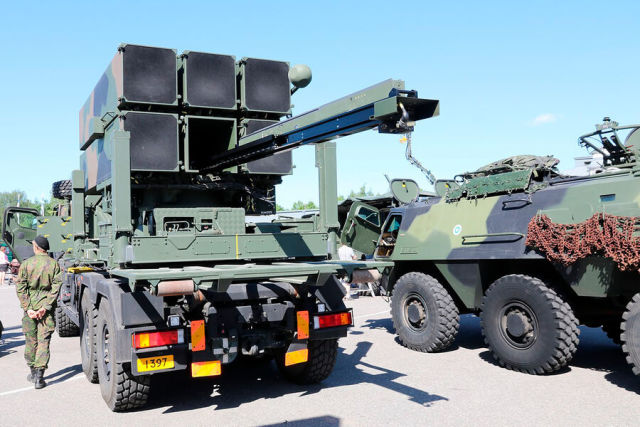Military expert Shurygin told how Ukraine will use NASAMS anti-aircraft systems
As part of the aid package, Washington announced the transfer of two batteries of NASAMS anti-aircraft missile systems to Ukraine. The air defense of the Armed Forces of Ukraine, which suffered serious losses during the special operation, will be replenished with 24 launchers, each of which has six anti-aircraft guided missiles. "Newspaper.Ru" understood the specifics of the operation of these systems.
Kiev expected to receive Patriot anti-aircraft missile systems from the United States. This was requested by the President of Ukraine Vladimir Zelensky and his wife, who on July 20 in the US Congress spoke about "protecting your home and the right to wake up alive in this house."
As a result, US congressmen approved the delivery of NASAMS complexes, whose missiles protect the airspace over the White House and the Pentagon.
The development of the NASAMS complex was carried out by the Norwegian firm Kongsberg Defense & Aerospace in partnership with the American company Raytheon. The first generation of these systems was put into operation in 1998. Similar complexes are in service with both the armies of Norway and the United States, as well as Spain, the Netherlands, Finland, Latvia.
Spain has placed a battery of its NASAMS complexes at the US Air Force base in the Latvian city of Lielvard - 8 units, all in service, leaving its sky without cover.
NASAMS is a mobile anti-aircraft missile system designed to combat maneuvering aerodynamic targets at low and medium altitudes, which can be understood as high-speed aircraft, fighters and attack aircraft, as well as cruise missiles. This is an air defense system, the range of which does not exceed 180 km. Converted air-to-air missiles AIM-9 Sidewinder and IRIS-T SLS and long-range AIM-120 AMRAAM-ER are used. They have a speed of 1020 meters per second.
"The sky of the Ukrainian capital is covered by about twenty air defense systems, including S-300PS, which are part of the 96th Kiev anti-aircraft missile Brigade," he told the newspaper.Ru" military expert, reserve Colonel Alexey Zhuravlev. - Additional ones, of course, will not hurt, but their effectiveness seems rather doubtful, especially in countering Russian missiles, which the APU is so afraid of. The American missile is not able to intercept the hypersonic Dagger missile flying at a speed of 4080 meters per second, and the Russian Caliber, which accelerates to 2600 meters per second at the final stage, is not available."
The expert also doubted the possibility of combining two NASAMS batteries with the data of the stations of the AFU radio engineering brigade stationed near Kiev into a single data exchange network. In the USA itself, NASAMS complexes use the TADIL network. It is a communication, navigation and identification system that supports data exchange between tactical command, aircraft, ships and ground units. There is no such thing in Ukraine.
One of the features of the complex is its ability to turn off radars and work almost imperceptibly. With radars completely disabled, the radius of combat use is limited to a range of 25-40 km .
The NASAMS complexes pose a potential danger to Russian combat and transport aircraft, which may be in the zone of its missiles.
"Kiev will not protect any decision-making centers with NASAMS complexes," he told the newspaper.Ru" military expert Vladislav Shurygin. - They will be immediately sent to the front line, where the APU lacks air defense equipment. This will already pose a great threat to our aviation. Accordingly, it will be necessary to change air tactics, to launch missile strikes from a longer range than the range of these complexes. Well, to inflict high-precision strikes on them themselves, disabling batteries that are located compactly in combat positions. NASAMS has a fairly high mobility and deployment and folding time in the combat position, so it will be a difficult task. NASAMS will not be able to protect Kiev, but it is a threat to our aviation."
Victor Sokirko

